What is myofascia you ask? Myofascia or “fascia” is the web of tissue that surrounds, supports, and connects all of our muscles and bones. Much like a full body suit, this continous weave of tissue covers you from head to toe. In a healthy state, your myofascia is strong and flexible.
When the myofascia is relaxed and soft, you are able to move through your full range of motion. When your body experiences trauma, inflammation, surgery, overuse, and longstanding poor posture, this tissue may lose its pliability, which can result in pain, muscle tension, and holding patterns that limit your ability to move normally.
Some common problems associated with myofascial dysfunction are:
- Muscle pain and spasm
- Headaches
- Chronic neck and back pain
- Recurring injuries
- Breathing difficulties
- Sensations such as numbness and pins and needles
- Formation of scar tissue
- Poor posture and reduced flexibility
Myofascial Release is a hands-on soft tissue therapy involving the application of sustained pressure onto connective tissue restrictions in order to eliminate pain, restore function, and change the mobility and health of the tissue. There are several different techniques that your therapist may use to address your individual problem.

These techniques include:
Direct Myofascial Release: The most common technique, Direct Myofascial Release involves direct pressure, usually deep, to engage the “restrictive barrier” of the tissue. The tissue is loaded with constant pressure (from the therapist’s knuckles, forearms, elbows, etc.) producing a localized stretch that elongates the restricted tissue until the release occurs.
Myofascial Decompression (MFD), also known as “cupping”: Much like a vacuum, cupping creates a negative pressure over the restricted tissues–stretching the adhesions away from the underlying structures. Cups remain in place for several minutes, providing a sustained pressure that is difficult to maintain through manual manipulation alone. MFD can be very effective in releasing chronic restrictions from poor posture, thickened and tight IT bands, and can assist with scar tissue mobilization following surgeries and trauma.
Indirect Release: Indirect release methods typically use a gentle pressure or motion to unload or unwind a painful tissue. This type of treatment is usually used when a tissue is in a painful holding pattern and more direct techniques are too painful. The fascia is gently stretched to interrupt the pain cycle until the range of motion is improved. Strain counterstrain (SCS) and positional release therapy (PRT) are two examples of indirect techniques.
At Pace West, our physical therapists are well trained in the various myofascial release techniques described above. Based on your initial evaluation and subsequent re-evaluations, our therapists will incorporate these techniques into your comprehensive care plan as needed, speeding up your progress through therapy toward your goals.
